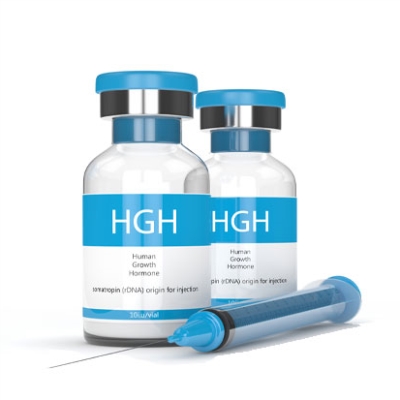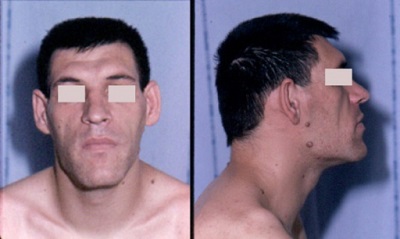 In this article, we will take a tour of the most shocking and interesting historical and scientific facts about a peptide hormone called HGH – human growth hormone. With receptors in every organ and tissue, HGH is critical for maintaining health throughout the aging process. With a storied past of fascinating uses, applications, and various attempt to synthesize the hormone over the years, HGH is also a fascinating subject to study through a historical lens. Let’s dive into the science and history behind HGH.
In this article, we will take a tour of the most shocking and interesting historical and scientific facts about a peptide hormone called HGH – human growth hormone. With receptors in every organ and tissue, HGH is critical for maintaining health throughout the aging process. With a storied past of fascinating uses, applications, and various attempt to synthesize the hormone over the years, HGH is also a fascinating subject to study through a historical lens. Let’s dive into the science and history behind HGH.
Historical Facts About HGH
The story of HGH in modern science begins in 1921 when biologists first theorized that a growth-promoting hormone may be responsible for directing normal tissue development in humans and other animals. 35 years later, researchers had successfully identified and isolated the hormone dubbed “HGH.” From the 1950s to the 1980s, hormone doctors began extracting HGH from human cadavers and introducing it to hormone-deficient patients, mostly children with HGH-related growth disorders. During this period of therapy using brain-derived HGH, 7,700 US patients underwent the procedure.
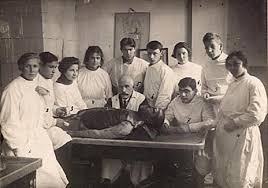
However, the evidence soon began to mount that extracting and transferring HGH from a human donor to a human recipient posed serious health risks to patients who received it. 26 cases of Creutzfeldt–Jakob disease (CJD), a serious, progressive neurodegenerative disease, have been attributed to HGH from human cadavers. Changing course in the 1980s, human-derived HGH was banned due to safety concerns over its causal role in the development of CJD. In its place, lab technicians developed the ability to manufacture synthetic HGH using genetically modified bacteria.
This synthetic HGH perfectly matches the natural HGH that the pituitary gland normally produces endogenously. The evidence so far – 40 years’ worth and counting – shows that this form of lab-produced HGH using recombinant DNA is safer and better tolerated than cadaver-derived HGH. Now, HGH is not only used to treat children’s growth disorders, but also as a powerful anti-aging tool that protects bone strength, maintains muscle mass, and keeps fat-burning metabolism revved up, even late into old age.
Growth hormone and Safety
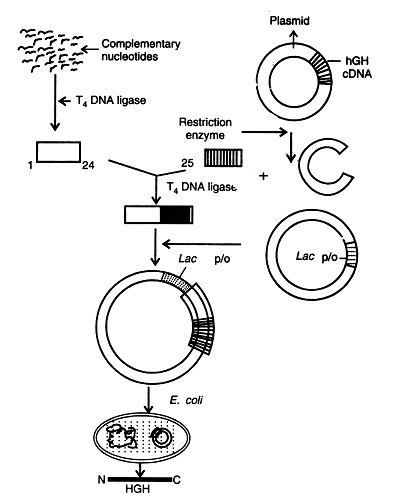 HGH does carry a risk of side effects. It’s important to keep in mind that seeking care from a licensed endocrinologist who continuously monitors patients via physically exams and bloodwork throughout the course of therapy can dramatically reduce the risks associated with HGH. The most common side effects of HGH are:
HGH does carry a risk of side effects. It’s important to keep in mind that seeking care from a licensed endocrinologist who continuously monitors patients via physically exams and bloodwork throughout the course of therapy can dramatically reduce the risks associated with HGH. The most common side effects of HGH are:
- Swelling in the arms and legs (edema)
- Carpal tunnel syndrome
- Increased insulin resistance
- Type 2 diabetes
- Joint and muscle pain
The Most Fascinating Results of HGH Therapy
HGH has many dozens of benefits for individuals who receive hormone replacement therapy (HRT). Some are more mundane while others border on the unbelievable. The most impressive results that patients experience following HGH therapy include:
- The beneficial reshaping and restricting of internal organs for optimized function
- Thicker, stronger skin
- Less stress (via downregulation of the stress response by lowering levels of the “stress hormone” cortisol)
- Increased cardiovascular output via greater nitric oxide levels
In a later section, we will cover more extensively all of the benefits that patients with growth hormone deficiency (GHD) receive through therapy with HGH.
HGH and Myths About Aging
For thousands of years, European explorers searched high and low, across multiple continents, for the “Fountain of Youth” that was believed to provide protection against the negative health effects of aging. The mythical Fountain was never discovered. Nonetheless, science has come a long way in the last several decades in its understanding of the aging process and, specifically, how to slow or even reverse it.
Hormones, including HGH, are heavily implicated in the aging process. Some of the top anti-aging effects of HGH include:
- Reduced wrinkles and younger-looking skin
- Optimized body composition (greater muscle mass, reduced fat, especially visceral fat or “belly fat”)
- Greater energy levels
- Improved joint health for long-term mobility
HGH and Abuse Among Athletes

Like other anabolic (pro-growth) hormones, HGH has become increasingly popular with the competitive athletic community as science drives the quest for greater and greater performance.
There is good evidence to show that HGH may, in fact, improve athletic prowess by facilitating greater muscle growth, improving cardiovascular endurance, and more.
However, illicit HGH abuse (without a prescription or supervision of a doctor) is both illegal and dangerous.
One of the major side effects of HGH abuse in athletes is the development of “HGH gut,” – also known as “roid gut,” ” Palumboism,” or a number of other terms to describe the same phenomenon.
HGH and Other Hormones
HGH is a critical component of the HPA axis, a network of hormones and glands called a neuroendocrine system that regulates digestion, the immune system, energy use (metabolism), sexual health, and multiple other functions required to keep your mind and body strong, happy, and healthy. In addition to its critical work within the HPA axis, HGH also works closely with its anabolic partner hormone, insulin-like growth factor-1 (IGF-1). IGF-1, in combination with HGH, performs the following activities in the body:
- Stimulates bone and muscle growth
- Regulates cell development
- Controls blood sugar
How HGH Is Distributed in the Body
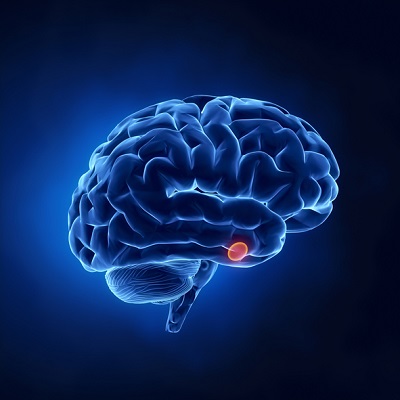 HGH is manufactured endogenously (inside the body) by the pituitary gland, a small pea-sized structure in the mid-region of the brain. Interestingly, instead of releasing a steady stream of HGH, the pituitary instead pumps out HGH in intervals called pulsatile secretions. The pituitary pushes out the greatest concentrations of HGH during sleep, as illustrated in the chart below. This connection between sleep and HGH release is the reason that poor sleep can contribute to an HGH deficiency.
HGH is manufactured endogenously (inside the body) by the pituitary gland, a small pea-sized structure in the mid-region of the brain. Interestingly, instead of releasing a steady stream of HGH, the pituitary instead pumps out HGH in intervals called pulsatile secretions. The pituitary pushes out the greatest concentrations of HGH during sleep, as illustrated in the chart below. This connection between sleep and HGH release is the reason that poor sleep can contribute to an HGH deficiency.
HGH and Muscle Development
Growth hormone aids muscle development in several key ways. First, it boosts protein synthesis, the building blocks of muscle. Second, it boosts collagen production in the joints and muscle tissue that protects them from injury.
The Amazing Health Pros of HGH
There’s a reason that HGH replacement therapy as an anti-aging tool is a multi-billion-dollar industry and growing: it provides exceptional health benefits to the men and women who receive it. HGH provides the following impressive anti-aging benefits to patients with diagnosed growth hormone disorder (GHD):
- Healthier, younger-looking skin, hair, and nails
- Improved cognitive function and decreased risk of developing neurodegenerative disorders such as Parkinson’s disease or Alzheimer’s disease
- Deeper, more restorative sleep
- Fat loss
- Greater energy levels to conquer the day
- Enhanced immune function to stave off infectious disease and the development of age-related autoimmune conditions
- Greater joint flexibility and lubrication, decreasing the risk of injury due to falls while slowing and possibly preventing the development of arthritis.
- Lowered systemic inflammation (a major driver of chronic disease)
- More optimistic, hopeful outlook on the future
Frequently Asked Questions About HGH
Let’s check out a few questions about HGH that patients interested in hormone therapy commonly ask.
Is HGH Harmful?
In normal amounts, HGH is not harmful – the body naturally produces this essential hormone because it is necessary to reap the multiple health benefits described in the previous section.
| Normal HGH Levels in Adults | |
| Men | 0.4-10 ng/mL* |
| Women | 1-14 ng/mL |
*nanograms per milliliter
- Acromegaly (swelling of the hands, feet, and face)
- Organ enlargement (a risk factor for serious health complications)
- Abnormal heartbeat (arrhythmia)
 However, abnormally high amounts of HGH – a condition called hyperpituitarism — can produce the following symptoms:
However, abnormally high amounts of HGH – a condition called hyperpituitarism — can produce the following symptoms:
Protect yourself from the potential adverse effects of HGH by always seeking care from an experienced hormone specialist.
Is HGH Illegal in the United States?
HGH is legal for patients who have a prescription for their medicine from a licensed doctor. However, the penalty for illegal possession of HGH from the black market carries the following penalties:
- Thousands of dollars in fines
- 6 months-1 year jail time
How Long Does HGH Replacement Therapy Take to Work?
Here is a timeline of the benefits of HGH replacement therapy and when you can expect to experience each one.
| General Timeline for HGH Therapy Results | |
| 2 weeks | · Improved sleep (circadian rhythm).
· Greater energy levels. |
| 1 month | · Better mood (lifting symptoms of anxiety and depression).
· Lowered cortisol counts. |
| 1-2 months | · Better focus.
· Increase in cardiovascular stamina. · More positive outlook on life in general. |
| 2 months |
Improved libido. · Reduction in fine lines and wrinkles around the mouth, eyes, and forehead. |
| 3-4 Months | · Increased skin thickness and elasticity – less sagging and wrinkles.
· Stronger nails. · Sharper memory. · Enhanced cognitive function. · Immune system strengthening. · More drive, determination, motivation, and productivity. · Enhanced state of emotional well-being. · Faster, thicker, fuller hair growth. · Significantly increased muscle strength. |
| 5+ Months | · Decreased inflammatory markers.
· Enhanced cardiac capacity for exercise. · Better stroke volume and fractional shortening. · Decreased blood pressure levels. · Increased nitric oxide generation (thanks to better levels of IGF-1). · Reduced atherosclerosis. |
Does HGH Burn Belly Fat?
Yes. HGH helps to stave off visceral fat, often called “belly fat” in everyday parlance. Visceral fat is dangerous for a number of reasons:
- Signals pro-inflammatory hormones and proteins.
- Increases risk of diabetes, heart attack, and stroke.
- Raises levels of harmful LDL cholesterol.

